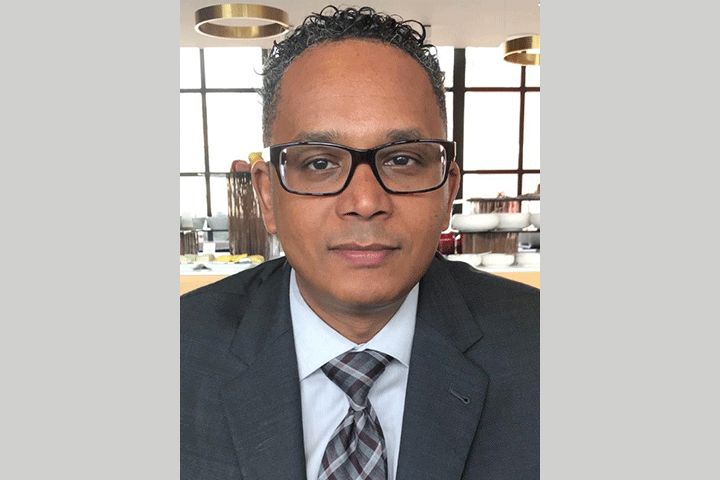A Combination of Neoadjuvant Chemotherapy and Radiation Shows Promise

Finding new treatment options to help pancreatic cancer patients live longer and live well is a major focus of pancreatic cancer research.
A new, randomized clinical trial presented at the ASCO Annual Meeting 2018 is adding to the body of knowledge about neoadjuvant therapy, or therapy prior to pancreatic cancer surgery. The study, called PREOPANC-1, showed that people with pancreatic cancer who received both chemotherapy with gemcitabine and radiation therapy before surgery lived longer than those who did not.
This study “addressed the issue of utilizing more pre-op therapy, which has been done many times before, but they did it in a randomized” study as opposed to an observational study, for example, explains gastrointestinal oncologist Dr. Alok A. Khorana, professor of medicine at the Cleveland Clinic Lerner College of Medicine and director of the Gastrointestinal Malignancies Program at the Cleveland Clinic.
But it’s important to remember that the results are preliminary, not a final analysis, says Khorana, who was not involved in the trial. As of the data cutoff, 142 of the 176 needed events for the primary outcome had been observed. “I think the final results will be in line with the preliminary results, and this is a strong signal and adds to our understanding of the potential importance of neoadjuvant treatment,” Khorana says, adding that it’s very important to learn about the role of radiation in neoadjuvant approaches since studies on adjuvant radiation have been mixed. “There are a lot of questions about neoadjuvant treatment so we need the data to show us what regimens are potentially best for patients in extending survival.”
What the Study Showed
PREOPANC-1 is an ongoing randomized, controlled, multicenter phase III trial that received funding from the Dutch Cancer Society KWF. The study enrolled 246 patients with pancreatic cancer that could be surgically removed. Patients were assigned to one of two treatment groups: one group received immediate surgery while the other group received chemoradiotherapy for 10 weeks, followed by surgery. Both treatment groups also received chemotherapy after surgery. The total amount of chemotherapy given was equal in both groups since the chemoradiotherapy group received part of the chemotherapy before surgery and the rest after. Resection was performed in 72% of patients in the immediate surgery group and 62% in the chemoradiotherapy group.
- Median Overall Survival Improvement. The median overall survival was 17.1 months with preoperative chemoradiotherapy compared to 13.7 months with immediate surgery.
- Complete Tumor Removal Improvement. The tumor was microscopically completely removed in a greater proportion of patients who received preoperative treatment, 63% vs. 31%.
- Time Until Recurrence. The time until pancreatic cancer recurrence was longer with preoperative therapy, 9.9 months vs. 7.9 months. The chance of surviving longer than two years was also higher with preoperative treatment than with immediate surgery, 42% vs. 30%.
- Patient Subset. In the group of patients whose tumors were surgically removed successfully, the difference in median survival was 42.1 months with preoperative treatment vs. 16.8 months with immediate surgery.
What’s Next for Neoadjuvant Studies?
The standard of care for patients with resectable or borderline resectable pancreatic cancer is surgery followed by adjuvant chemotherapy. But surgery is only possible in about 20 percent of patients, and many patients experience disease recurrence.
“We know that pancreatic cancer is a systemic disease and we need to find better chemotherapy regimens for patients,” says Khorana, who also serves as Co-Chair of the ASCO Guidelines Panel on Resectable Pancreas Cancer.
He believes one study that will help inform neoadjuvant treatment is SWOG 1505. This is a randomized phase II study of perioperative mFOLFIRINOX versus gemcitabine/nab-paclitaxel as therapy for resectable pancreatic adenocarcinoma. “I look forward to seeing the results of that study, especially based on results from the adjuvant study (presented at ASCO),” Khorana says. “It’s clear we need to see how this (mFOLFIRINOX) works in the neoadjuvant setting.”
The study he is referring to is PRODIGE 24/CCTG PA.6 trial, which looked at two different adjuvant regimens. This was a randomized phase III trial for patients with surgically removed pancreatic cancer that compared mFOLFIRINOX to the current standard of care gemcitabine. Patients who received mFOLFIRINOX lived a median of 20 months longer. They were also cancer-free nine months longer than those who received gemcitabine.
“I’ve been treating this disease for almost two decades, and in the last four years it seems I’ve seen the most hopeful data since I started,” Khorana says. “I rarely used to see patients live past a year, now that’s pretty common, as is two years. I have a handful living three years with metastatic disease.”
“Compared to other cancers, pancreatic cancer wasn’t moving in the right direction. Now it is, and I know that will continue. So I really look forward to the data from trials that will help us move this disease in the right direction more quickly.”





